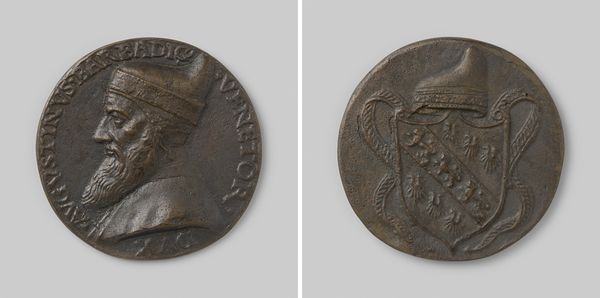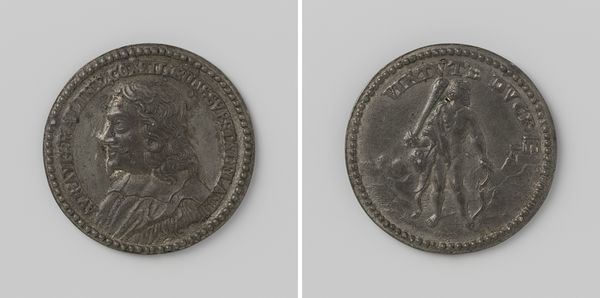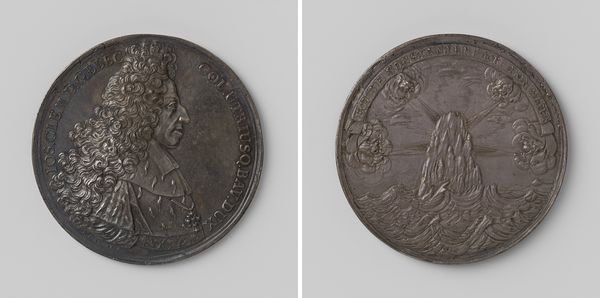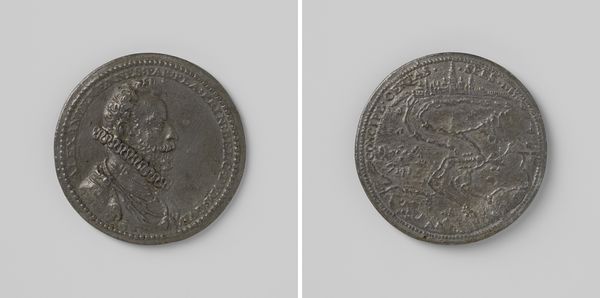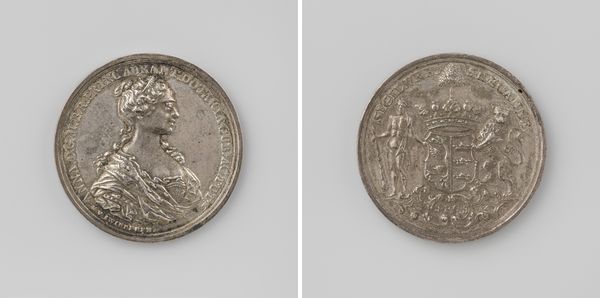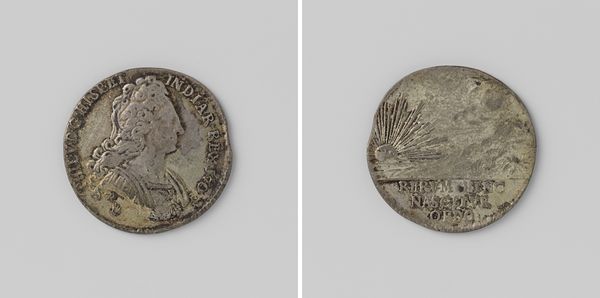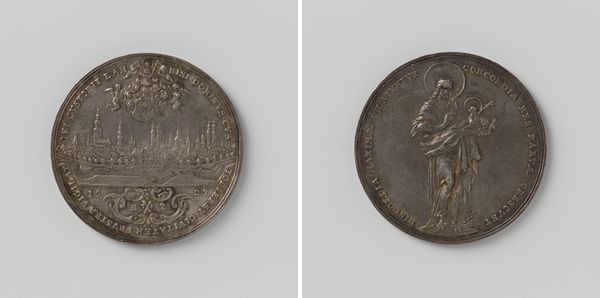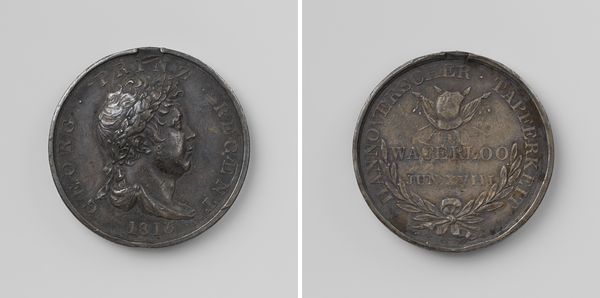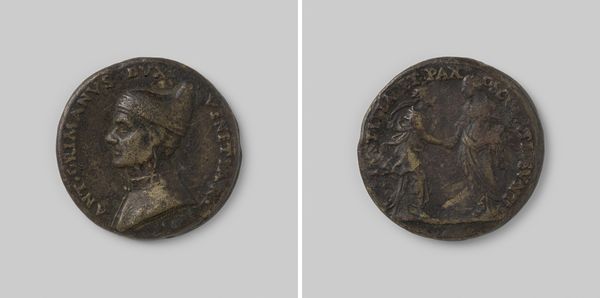
#
natural stone pattern
#
3d sculpting
#
3d printed part
#
rounded shape
#
sculpture
#
detailed texture
#
sculptural image
#
unrealistic statue
#
3d shape
#
stoneware
Dimensions: diameter 3.8 cm, weight 25.54 gr
Copyright: Rijks Museum: Open Domain
Curator: This impressive medallion, dating back to 1580, commemorates Ernst van Beieren's election as Bishop of Liège. Its creation remains attributed to an anonymous artist. What strikes you most when you first observe it? Editor: It feels like a weighty object, both literally and figuratively. There's a density in the modeling of the figures that suggests considerable authority, a power frozen in bronze or stoneware. A somewhat austere, declarative power. Curator: Indeed. Medallions like this served as both portraiture and political messaging, distributed to cement allegiance and communicate power dynamics. Van Beieren’s profile on one side presents a man of firm resolve. Editor: The reverse is fascinating—the lions rampant supporting a column topped by what looks like heraldic banners. The imagery seems to project the might and symbolic significance tied to this religious office. Lions are potent symbols. Curator: Exactly. The lions historically represented courage and strength, deeply connected to leadership, heraldry, and sovereignty. Pairing them with the column and banners reinforces a sense of established power and rightful authority, themes that continually resonated throughout the Bishop’s reign. The emblems probably allude to his familial and ecclesiastical authority. Editor: These types of objects circulated within specific networks. What could owning this have signified? Curator: Displaying this medallion would likely signify allegiance, admiration, or perhaps even a stake in his governance. It became a wearable emblem, a portable piece of propaganda reflecting social status and political leaning within the diocese and wider networks of power in that time. Editor: It's interesting how these small objects amplified and projected power on an individual scale, giving visibility to specific events of its time. Curator: Precisely. Consider how this piece speaks of tradition and the conscious fashioning of reputation—it links directly back to larger structures, events, and the visual communication strategies throughout Ernst Van Beieren’s life and administration. Editor: So, while its creation is unsigned, the medallion speaks volumes about 16th-century authority and visual culture. Thanks for shining some light on its historical symbolism and the values that this iconography conveys.
Comments
No comments
Be the first to comment and join the conversation on the ultimate creative platform.
